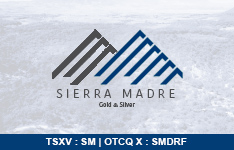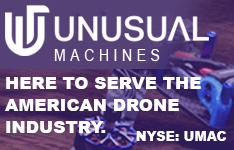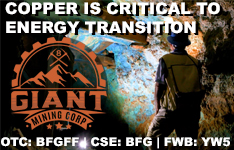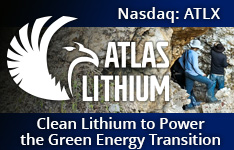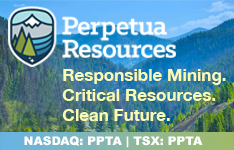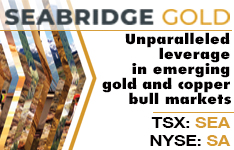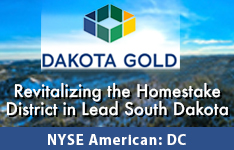Aisix Solutions Inc. (AISX:TSX.V; AISXF:OTCQB; QT7: FSE), a climate risk and data analytics company, drew national attention in early June for the accuracy and real-world validation of its wildfire forecasting platform, Wildfire 3.0. Two separate announcements issued by the company — on June 4 and June 9 — outlined both the predictive success of its modeling and the scientific foundation supporting the system.
In its June 4 release, AISIX stated that several communities identified in its Q1 2025 risk assessments, including Fort Smith, Swan Hills, and Kenora, were among those experiencing active wildfires during the current fire season. The company's CEO, Mihalis Belantis, remarked that “the fires we are currently seeing in communities highlighted in AISIX’s reports underscore the urgent need for proactive risk management and the value that wildfire intelligence can deliver to governments, industry, and communities alike.” According to the Canadian Wildland Fire Information System, more than 2 million hectares had burned across Canada by that time, and over 25,000 residents had been evacuated from Manitoba, Saskatchewan, and Alberta.
AISIX's wildfire modeling system is based on the BurnP3+ framework, integrating machine learning, physical-based fire behavior modeling, and climate projections. These elements are used to simulate wildfire dynamics under both current and future climate scenarios. In February, the company signed a contract with the Climate Risk division of an S&P 500 company to supply wildfire modeling data, initially focused on Alberta before expanding to a national scope.
On June 9, AISIX shared further insights into its modeling approach during an interview on The Ben Mulroney Show, featuring the company’s Senior Climate Scientist, Dr. Erik Young. He described how AISIX’s Wildfire 3.0 platform leverages the Cell2Fire2 simulation engine alongside Shared Socioeconomic Pathway (SSP) climate scenarios to produce burn probability, fire intensity, and fire footprint projections. “We’re seeing early-season wildfire activity in areas our model had identified as higher-risk,” Dr. Young said. “It’s a good indicator that our integrated approach using climate projections, fire behavior modeling, and data analytics focused on many aspects of fire regimes, has predictive relevance in real-world conditions.”
The company’s reporting emphasized that Wildfire 3.0 data had been used by stakeholders ranging from infrastructure operators to insurance providers, supporting risk mitigation strategies during a period of heightened wildfire activity. The full interview with Dr. Young was made available in the Media Coverage section of AISIX’s website.
AI-Enhanced Climate Risk Modeling Gains Traction Across Global Initiatives
According to a March 15 perspective article published in Nature Communications, early-warning systems (EWS) served as an essential tool in disaster risk reduction strategies, yet remained constrained by forecasting limitations, communication challenges, and the need for localized impact assessments. The authors advocated for AI-enhanced modeling to address these shortcomings, writing that “the accuracy and effectiveness of EWSs depend not just on the quality of data gathered from sensors, process understanding, and the ability to predict hazards accurately... but also the speed and effectiveness of communication.” They emphasized the value of incorporating AI to produce multi-hazard forecasts using Meteorological and Geospatial foundation models and called for a shift toward “impact-based forecasts and warnings” that reflect real-world vulnerabilities.
The report also highlighted the importance of transparency and equity in AI deployment. The authors proposed the FATES framework — Fairness, Accountability, Transparency, Ethics, and Sustainability — as a guiding principle for responsible development of AI-based early-warning systems. They noted that the ideal system would “leverage the full spectrum of available observations,” including non-traditional inputs like socioeconomic data, satellite imagery, and even social media, while modeling potential decision outcomes and infrastructure vulnerabilities at hyperlocal scales.
On June 4, Ireland’s Environmental Protection Agency released its first National Climate Change Risk Assessment, identifying 43 significant risks requiring urgent action. EPA Director General Laura Burke stated that “this comprehensive assessment highlights the need for additional urgent action to ensure Ireland is sustainably resilient to the risks that we currently face.” She emphasized how infrastructure disruptions from extreme weather had cascading effects across public health, ecosystems, and the financial system.
In an article published June 5, Google Research, climate experts outlined the limitations of traditional climate models, stating that high-resolution forecasts — such as those at the city or sub-regional level - remained computationally costly and often inaccessible to local agencies. To address this, new modeling frameworks emerged that focused on improving accuracy while reducing computational overhead, particularly for complex regional risks like wildfires, floods, and extreme heat.
Researchers stressed the importance of generating environmental forecasts that reflected regional terrain and weather dynamics, noting that “identifying spatial patterns and correlations is important for downstream applications in hydrology, energy forecasting, or natural hazard risk assessment.” They also underscored the sector’s growing need for tools capable of capturing the risk of compound events, such as concurrent heat and drought, which traditional statistical methods often failed to assess effectively.
From Fire Forecasts to Competitive Edge: What’s Fueling AISIX’s Forward Momentum
AISIX Solutions’ investor presentation outlines a broader vision for delivering predictive climate analytics across multiple risk categories.The company’s services span wildfire risk assessments, vulnerability modeling, and risk mitigation strategy development. Wildfire 3.0 Canada remains the flagship product, but AISIX is advancing parallel offerings such as Extreme Heat Canada, MineSafe Wildfire, and Climate Genius, a planned consumer interface for broader climate data access.
The company reports that its wildfire models predicted more than 90% of 2024’s Canadian burn areas, emphasizing the accuracy and reliability of its algorithms. This capability has been central to its engagement with key sectors such as insurance, real estate, government, and risk management. AISIX also highlights strategic relationships with partners like MNP and ClimateDoor, supporting both business development and client integration.
In terms of product development, AISIX is actively working on expanding its geographic reach, with new models for California wildfires and extreme wind conditions in development. Its platform processes structured and third-party data to generate asset-specific risk analyses, offering geospatial visualization, predictive metrics, and claims forecasting capabilities. The forthcoming Climate Genius MVP aims to broaden market reach through user-friendly, API-accessible data outputs.
Streetwise Ownership Overview*
Aisix Solutions Inc. (AISX:TSX.V; AISXF:OTCQB;QT7: FSE)
With over 50 media features in 2025, AISIX’s profile continues to grow alongside interest in climate resilience solutions. Its leadership, including CEO Mihalis Belantis and a roster of PhDs and climate scientists, positions the company to meet rising regulatory and operational demand for auditable and transparent climate risk assessments.
Ownership and Share Structure
As for the ownership of AISIX, according to Refinitiv, two insiders hold 14.25% of the company. They are CEO and Director Belantis with 13.03% and Cofounder and Advisor David Poole with 1.22%.
Retail investors own the remaining shares as there are no institutional owners.
In terms of structure, AISIX has 113.62 Million shares outstanding and 80.67 million free-float traded shares.
The firm's market cap is CA$3.409 million, and it trades in a 52-week range of CA$0.015 and CA$0.07 per share.
Want to be the first to know about interesting Technology investment ideas? Sign up to receive the FREE Streetwise Reports' newsletter.
Subscribe
Important Disclosures:
- Aisix is a billboard sponsor of Streetwise Reports and pays SWR a monthly sponsorship fee between US$4,000 and US$5,000.
- As of the date of this article, officers and/or employees of Streetwise Reports LLC (including members of their household) own securities of Aisix.
- James Guttman wrote this article for Streetwise Reports LLC and provides services to Streetwise Reports as an employee.
- This article does not constitute investment advice and is not a solicitation for any investment. Streetwise Reports does not render general or specific investment advice and the information on Streetwise Reports should not be considered a recommendation to buy or sell any security. Each reader is encouraged to consult with his or her personal financial adviser and perform their own comprehensive investment research. By opening this page, each reader accepts and agrees to Streetwise Reports' terms of use and full legal disclaimer. Streetwise Reports does not endorse or recommend the business, products, services or securities of any company.
For additional disclosures, please click here.












